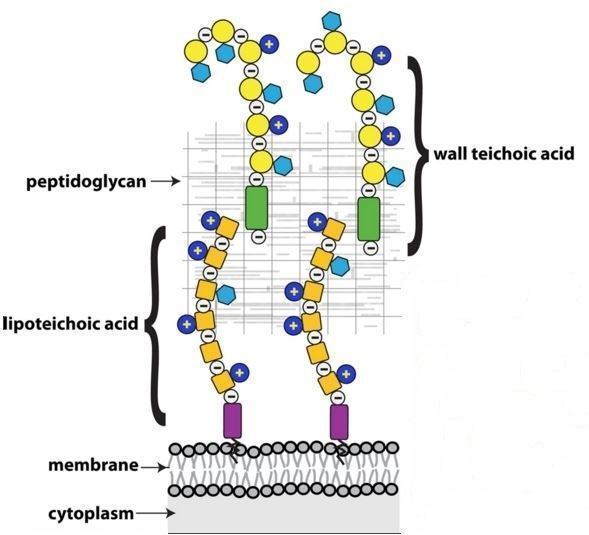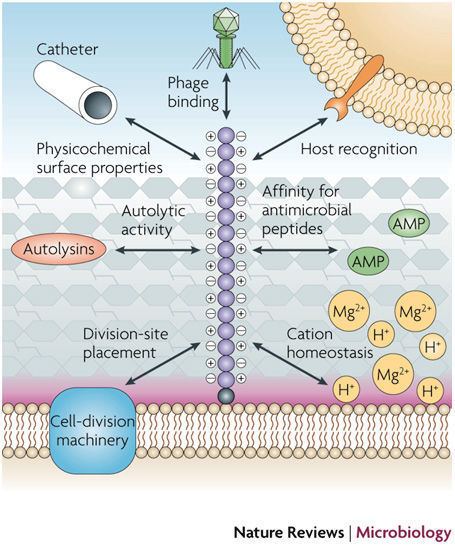Classification Teichoic Acids | ||
Medical vocabulary what does teichoic acids mean
Teichoic acids (cf. Greek τεῖχος, teīkhos, "wall", to be specific a fortification wall, as opposed to τοῖχος, toīkhos, a regular wall) are bacterial copolymers of glycerol phosphate or ribitol phosphate and carbohydrates linked via phosphodiester bonds.
Contents
- Medical vocabulary what does teichoic acids mean
- Pnas structure and mechanism of staphylococcus aureus tarm the wall teichoic acid
- Location and structure
- Wall teichoic acids
- Function
- Biosynthesis
- Wall Teichoic Acids synthesis as an antibiotic drug target
- References

Pnas structure and mechanism of staphylococcus aureus tarm the wall teichoic acid
Location and structure

Teichoic acids are found within the cell wall of most Gram-positive bacteria such as species in the genera Staphylococcus, Streptococcus, Bacillus, Clostridium, Corynebacterium, and Listeria, and appear to extend to the surface of the peptidoglycan layer. Teichoic acids are not found in Gram-negative bacteria. They can be covalently linked to N-acetylmuramic acid or a terminal D-alanine in the tetrapeptide crosslinkage between N-acetylmuramic acid units of the peptidoglycan layer, or they can be anchored in the cytoplasmic membrane with a lipid anchor.

Teichoic acids that are anchored to the lipid membrane are referred to as lipoteichoic acids (LTAs), whereas teichoic acids that are covalently bound to peptidoglycan are referred to as wall teichoic acids (WTA).
Wall teichoic acids

The most common structures are a ManNAc(β1→4)GlcNAc disaccharide with one to three glycerol phosphates attached to the C4 hydroxyl of the ManNAc residue followed by a long chain of glycerol- or ribitol phosphate repeats.
Function

The main function of teichoic acids is to provide rigidity to the cell-wall by attracting cations such as magnesium and sodium. Teichoic acids can be substituted with D-alanine ester residues, or D-glucosamine, giving the molecule zwitterionic properties. These zwitterionic teichoic acids are suspected ligands for toll-like receptors 2 and 4. Teichoic acids also assist in regulation of cell growth by limiting the ability of autolysins to break the β(1-4) bond between the N-acetyl glucosamine and the N-acetylmuramic acid.
Lipoteichoic acids may also act as receptor molecules for some Gram-positive bacteriophage; however, this has not yet been conclusively supported. It is an acidic polymer and contributes negative charge to the cell wall.
Biosynthesis
Enzymes involved in the biosynthesis of WTAs have been named : TarO, TarA, TarB, TarF, TarK, and TarL.
Wall Teichoic Acids synthesis as an antibiotic drug target
This was proposed in 2004.

